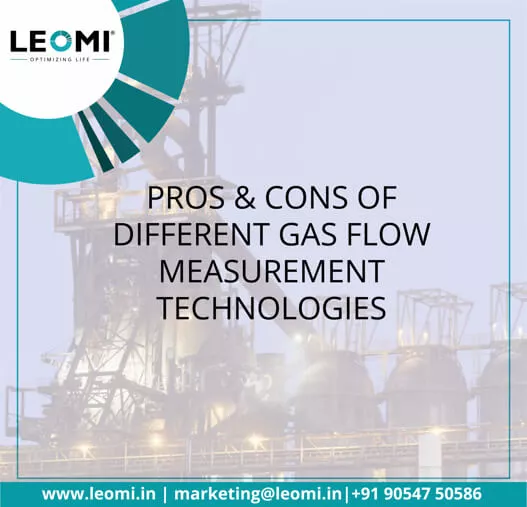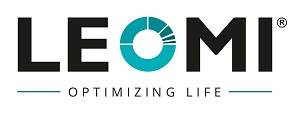
This blog will try to highlight the pros and cons of different gas flow measurement technologies available in the market which will help process instrumentation engineers to effectively choose the best flow metering technology for defined application which results in optimum results w.r.t cost versus performance ratio.
Below are the Gas flow measurement technologies available :
- DIFFERENTIAL PRESSURE-BASED ORIFICE/AVERAGING PITOT TUBE/VENTURI/AEROFOIL
- THERMAL MASS–INSERTION TYPE
- CORIOLIS
- VORTEX
- TURBINE
- ULTRASONIC – CLAMP-ON TYPE
The process instrumentation engineer’s task is to identify which of the above will be the best suitable technology.
Below are some important factors to be considered & evaluated with comparing technologies for optimum selections:
- Pipe sizes
- Process conditions such as flow rate, pressure, temperature, density, viscosity, dirt & moisture, etc.
- Installation conditions such as horizontal, vertical, or inclined & available straight lengths, time & efforts, etc.
- Accuracy & repeatability needed
- Process turndown ratio needed
- Budgeted price
Based on the above factors we will try to summarize the PROS and CONS of different flow technologies & its a possibility for selection. However, the ultimate choice is of the process engineer who has some specific technologies dominance and/or experience.
1. DIFFERENTIAL PRESSURE-BASED FLOW METER (ORIFICE / AEROFOIL / VENTURI / PITOT TUBE)
PROS
- Established Standard BS-1042/ISO5167 for Volumetric flow measurement
- Suitable for 15mm to 10mtrs or higher pipe sizes
- Rugged designed for any process conditions of industries
- Any orientation possible
- Highly Repeatable
- Low budget upto 300mm pipe size
- Site calibration easy
CONS
- Higher pressure drop
- Needs periodic maintenance
- Lower Accuracy 3% FSD & may drift time to time
- Lower turn-down ratio 4:1
- Lower flow sensitivity
- Susceptible to clogging
- High wear factor
2. THERMAL MASS FLOW METER – INSERTION TYPE
PROS
- Works on constant temperature anemometry (thermal dispersion)
- Pipe sizes suitable 15mm to 10000mm
- Insertion is rugged and works up to 400⁰C & 16bar or more
- Any orientation possible
- Better accuracy ±2%RD
- Highest turndown ratio 100:1 or better
- Insertion type is adjustable & versatile
- Insertion has a lowest pressure drop
- The low initial cost above 100mm pipe sizes
CONS
- Mechanically vulnerable to damage
- Susceptible to turbulence & vibrations
- Flow straightener recommended
- Affected by high moisture (>10%Vol.) & dirt/dust needs periodic cleaning or purging system
3. CORIOLIS FLOWMETER
PROS
- Works on Coriolis effect by oscillating tube provides direct mass flow rate
- Suitable from 2mm to 300mm pipe sizes
- Suitable for high pressure upto 400bar or more
- Any orientation possible
- Highest accuracy (±0.1%- ±0.5%RD) & Repeatability (±0.02%)
- Highest turn down ratio 100:1 or more
CONS
- High-pressure drop
- Not suitable larger pipe dia than 300mm
- Not suitable for higher temperatures above 120⁰C
- Sensitive to vibrations
- High Initial Cost
4. VORTEX FLOWMETER
PROS
- Derives volumetric flowrate by vortices frequency measurement principle
- Suitable from 15mm to 300mm
- Horizontal or vertical orientation is possible
- Suitable up to 300⁰C temperature & pressure up to 40bar
- Better accuracy up to (±1.5%RD) & Repeatability (±0.02%)
- Low Initial cost up to 80mm size
CONS
- Higher pressure drop
- Lower turn-down ratio 10:1
- Installation needs utmost care
- Susceptible to vibrations & turbulence
- Needs periodic maintenance
- High Initial cost 100mm & above size
5. TURBINE FLOWMETER
PROS
- Derives volumetric flowrate by moving the rotating turbine frequency
- Pipe sizes suitable: 6mm to 300mm
- Suitable for high pressure 250 bar & temperature up to 200⁰C
- Horizontal or vertical orientation is possible
- High accuracy up to ±1% RD & repeatability ±0.25%
- Low initial cost
CONS
- Gas must be dry and clean
- Susceptible to vibrations & turbulence
- Moving parts needs periodic maintenance
- High wear factor
6. ULTRASONIC FLOWMETER – CLAMP-ON TYPE
PROS
- Derives volumetric flowrate by ultrasonic beam transit-time measurement – Non-Intrusive & Fixed Type
- Pipe sizes suitable : 10mm to 1600mm
- Suitable for high pressure 200 bar & temperature upto max 200⁰C
- Horizontal or vertical orientation possible
- Better accuracy upto ±1%-3% RD & repeatability ±0.25%
- Turn down ratio better than 100:1
- Low Installation cost
CONS
- Gas must be dry and clean
- High Initial Cost
- Installation need good technical knowledge
- Not suitable for pipes with inner lining
*NOTE: Above article don’t claim accuracy and it is for general guidance on flow technologies as per practical experience there may be improvements or different configuration possible from different manufacturers which may eliminate some disadvantages.
Considering the above Pros & Cons of different flow measurement principle user can be able to understand its need and compare basic important parameters which will ensure optimum selections. Hope this will help in your future decisions. Pls.do write us a comment on the same.
LEOMI, A make-in-India start-up registered company manufacturing Insertion Thermal mass flowmeter which has many inherent advantages in terms of performance versus cost ratio.





